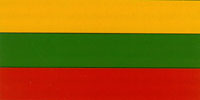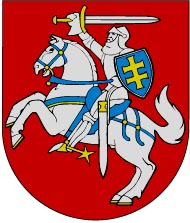Population
Lithuania (2001)
Total: 3,692,600; 2.5 million urban residents and 1.2 million rural.
Ethnic Composition: Lithuanians 81.8%, Russians 8.1%, Poles 6.9%, Belarusians 1.4%, Ukrainians 1%, Jews 0.1%, Others 0.7% (2001).
Vilnius city (2001)
Total: 576,400.
Ethnic Composition: 52.8% Lithuanians, 19.2% Poles, 19.2% Russians, 4.8% Belarusians, 0.7% Jews, 3.3% others.
Geography
Territory: At 65,300km2 Lithuania is the largest of the three Baltic nations. Fertile lowland peppered with many lakes.
Borders: Baltic sea 99km, Belarus 502km, Latvia 453km, Kaliningrad (Russia) 227km, Poland 91km.
Elevation: Vilnius stands 213 m above sea level. The highest point (depending on who you ask) is either Juozapine or Kruopine, both 293 to 294 m high.
Longest River: Nemunas 937 km (of which 475km in Lithuania).
Largest Lake: Druksciai 4479 hectares.
Highest Point: Juozapine 293.6 metres.
The climate
Climate is transitional between maritime and continental. Average day temperature in October is about 12 degrees. The weather could be rainy in the month of October, so be prepared for it.
Politics
 The state of Lithuania is an independent, democratic republic. The state power in Lithuania belongs to the Seimas (Parliament), President of the Republic, Goverment and Court. Powers are limited according to the constitution, adopted in 1992 by a referendum. The territory of the state is one and not divisible. The official language - is Lithuanian.
The state of Lithuania is an independent, democratic republic. The state power in Lithuania belongs to the Seimas (Parliament), President of the Republic, Goverment and Court. Powers are limited according to the constitution, adopted in 1992 by a referendum. The territory of the state is one and not divisible. The official language - is Lithuanian.
Colours of the flag are – gold, green, red.
 State Emblem – the white Vytis in the red field.
State Emblem – the white Vytis in the red field.
The Capital of Lithuania – city of Vilnius. Vilnius is a historical capital of Lithuania. The foundation of the economic system is private ownership, personal economic freedom and initiative. Seimas (Parliament) consists of the representatives of the Nation. There are 141 members of the Seimas.
The President:
Rolandas PAKSAS
The President of the Parlament:
Artūras PAULAUSKAS
The Prime Minister:
Algirdas Mykolas BRAZAUSKAS